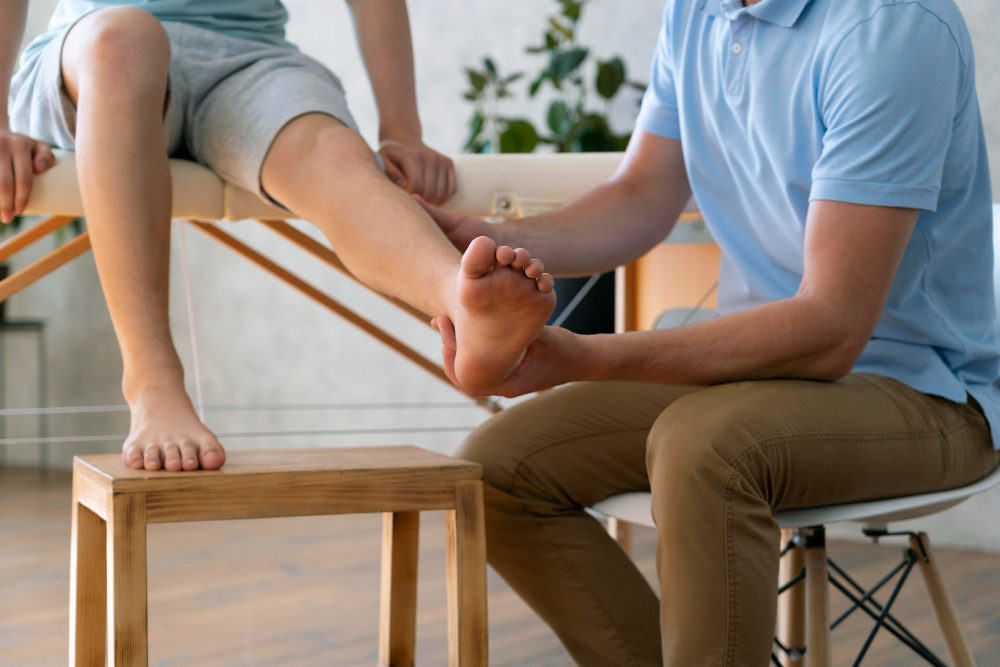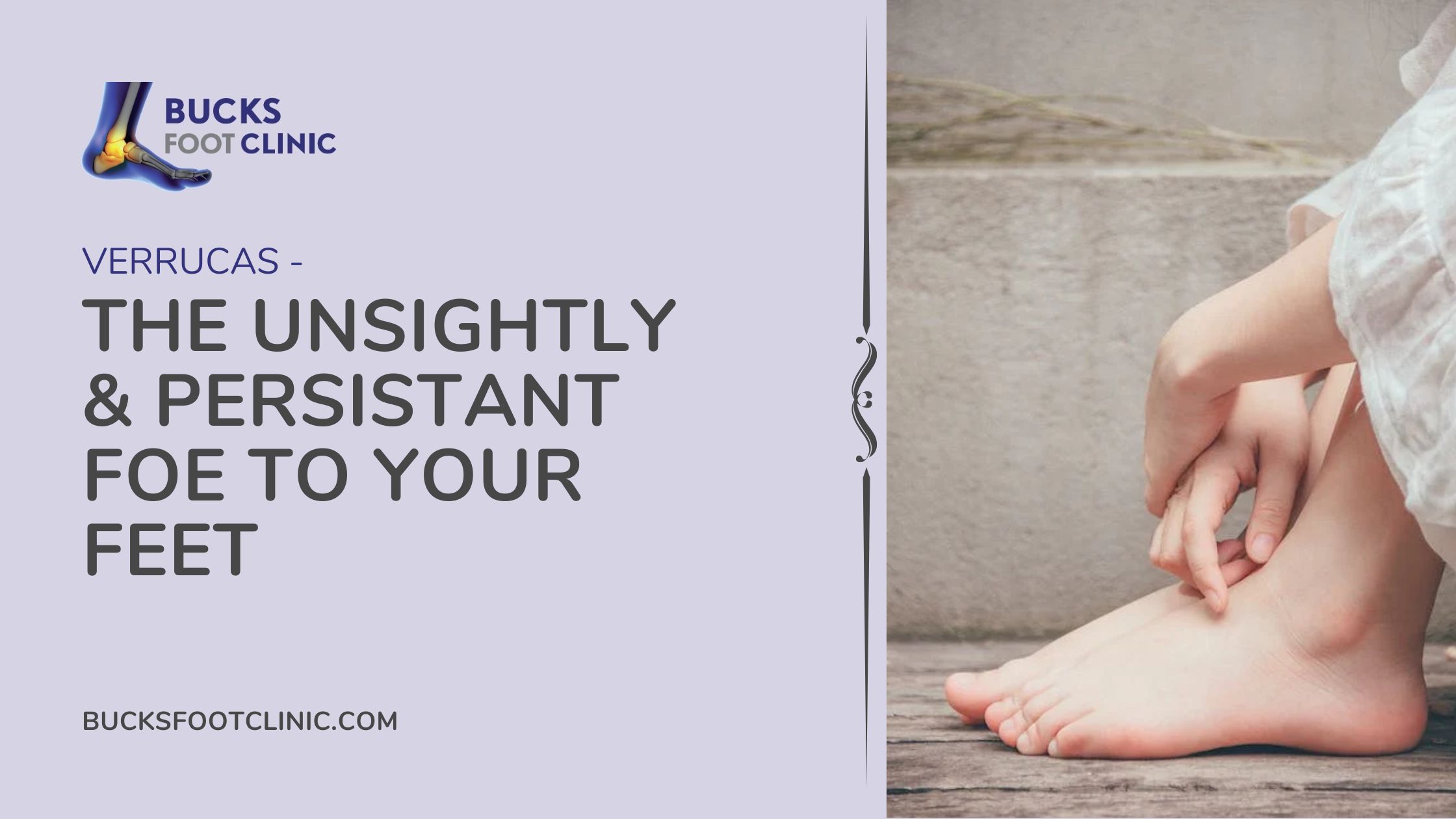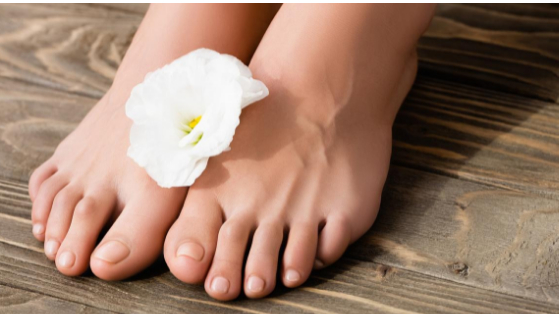
Podiatry, also known as chiropody, is the branch of medicine that deals with the study, diagnosis, and treatment of disorders of the foot, ankle, and lower leg. A podiatrist, also known as a “foot doctor”, is a healthcare professional who specializes in this field.
Our podiatrists in Little Chalfont are highly trained and experienced professionals who can help with a wide range of foot and ankle problems. In this blog, we will be discussing all you need to know about podiatry, including what a podiatrist is, the conditions they can treat, and the benefits of seeing a podiatrist.
Whether you’re experiencing pain or discomfort in your feet or ankles, or if you’re at risk of developing foot problems, it’s important to understand the role of a podiatrist in maintaining your foot health. So, let’s dive in and discover the world of podiatry together.
What Is Podiatry?
Podiatry is the branch of medicine that is concerned with the diagnosis, treatment, and prevention of disorders of the feet and lower limbs. A podiatrist is a healthcare professional who specializes in this field. They are trained to diagnose, treat, and prevent conditions of the foot and ankle, such as injuries, deformities, and diseases. Podiatrist can diagnose and treat a wide range of conditions, including heel pain, bunions, corns and calluses, ingrown toenails, fungal nails, verrucae, flat feet, knee pain, leg length discrepancy, and diabetic foot care. They use a variety of techniques and treatments, including surgery, orthotics, physical therapy and medication.
What Is A Podiatrist?
A podiatrist is a healthcare professional who specializes in the diagnosis, treatment, and prevention of disorders of the feet and lower limbs. They are also known as a chiropodist or a foot doctor. Podiatrists are trained to diagnose and treat a wide range of conditions that affect the feet and lower limbs, including injuries, deformities, and diseases. They use a variety of techniques and treatments, including surgery, orthotics, physical therapy and medication to diagnose, treat and prevent these conditions. They also provide advice and education to patients on how to take care of their feet and lower limbs to prevent future problems. Podiatrists are licensed and regulated.
What Can A Podiatrist Treat?
A podiatrist can treat a wide range of conditions, including:
- Heel pain
- Bunions
- Corns and calluses
- Ingrown toenails
- Fungal nails
- Verrucae
- Flat feet
- Knee pain
- Leg length discrepancy
- Diabetic foot care
Who Can Benefit From Seeing A Podiatrist?
Anyone can benefit from seeing a podiatrist, but some groups of people may find it particularly beneficial. Some examples include:
- People experiencing foot or ankle pain: If you’re experiencing pain or discomfort in your feet or ankles, a podiatrist can help diagnose the cause of the pain and provide treatment options.
- People with foot conditions: Podiatrist can diagnose and treat a wide range of conditions that affect the feet, such as bunions, hammertoes, plantar fasciitis, and more.
- People with diabetes: People with diabetes are at a higher risk of developing foot problems, and a podiatrist can provide specialized care and treatment to help prevent complications.
- Athletes and active people: Athletes and active people are at a higher risk of developing sports-related injuries to the feet and ankles, and a podiatrist can provide treatment and advice on how to prevent these injuries.
- Children and older adults: Children and older adults may develop problems with their feet that can make it difficult to move around. A podiatrist can help these groups maintain mobility and independence by treating these issues.
- Pregnant women: Pregnant women can benefit from seeing a podiatrist to address any foot or lower limb discomfort caused by the added weight and stress on the feet and legs during pregnancy.
- People with chronic conditions: People with chronic conditions such as arthritis, obesity, or peripheral arterial disease can benefit from seeing a podiatrist to manage pain, mobility, and prevent complications.
Why Should I See A Podiatrist?
There are many reasons why you might want to see a podiatrist. Here are a few:
- Foot or ankle pain: If you’re experiencing pain or discomfort in your feet or ankles, a podiatrist can help diagnose the cause of the pain and provide treatment options.
- Foot conditions: Podiatrist can diagnose and treat a wide range of conditions that affect the feet, such as bunions, hammertoes, plantar fasciitis, and more.
- Diabetic foot care: People with diabetes are at a higher risk of developing foot problems, and a podiatrist can provide specialized care and treatment to help prevent complications.
- Orthotics: Podiatrist can provide custom orthotics, which are special shoe inserts that can help correct problems with the way you walk and alleviate pain.
- Sports injuries: Podiatrist can treat and prevent sports-related injuries to the feet and ankles, and also provide advice on how to maintain foot health while participating in sports activities.
- Geriatric care: As people get older, they may develop problems with their feet that can make it difficult to move around. A podiatrist can help older adults maintain mobility and independence by treating these issues.
- Children care: A podiatrist can also treat children’s foot and ankle problems, and provide advice on how to prevent problems from developing.
Seeing a podiatrist can help you with a wide range of foot and ankle problems, and also help prevent future problems by providing specialized care and education on how to maintain your foot and ankle health.
Podiatrists & Diabetes
A podiatrist can help people with diabetes manage their condition and prevent complications in several ways:
- Diabetic foot examination: Podiatrist can perform regular foot examinations to check for any signs of damage or infection in the feet. They can also advise on how to take care of your feet to prevent problems from developing.
- Wound care: People with diabetes are at a higher risk of developing foot ulcers and other wounds. A podiatrist can provide wound care and treatment to help heal these wounds and prevent infections.
- Offloading: A podiatrist can recommend and provide offloading devices such as shoe inserts, special shoes, and casts, to take pressure off of areas of the foot that are at risk of developing ulcers.
- Footwear advice: A podiatrist can advise on the appropriate footwear for people with diabetes and also provide custom-made shoes or orthotics to help prevent foot problems.
- Monitoring for neuropathy: Podiatrist can also monitor for neuropathy, which is a condition that can occur in people with diabetes where there is damage to the nerves in the feet. This can lead to a loss of sensation in the feet and an increased risk of injury.
Referral to other specialists: If necessary, podiatrist can refer patients to other specialists, such as endocrinologists or vascular surgeons, to manage diabetes and its complications.
Where Can I Find A Podiatrist In Little Chalfont?
If you’re experiencing pain or discomfort in your feet or ankles, or if you’re at risk of developing foot problems, it’s a good idea to visit a podiatrist in Little Chalfont for an examination. At Bucksfoot Clinic, our team of experienced podiatrists are dedicated to providing the highest level of care to our patients. We offer a wide range of services to help diagnose and treat foot and ankle problems, and we’re committed to helping our patients achieve optimal foot health.
Book an appointment with us today!




Recent Comments